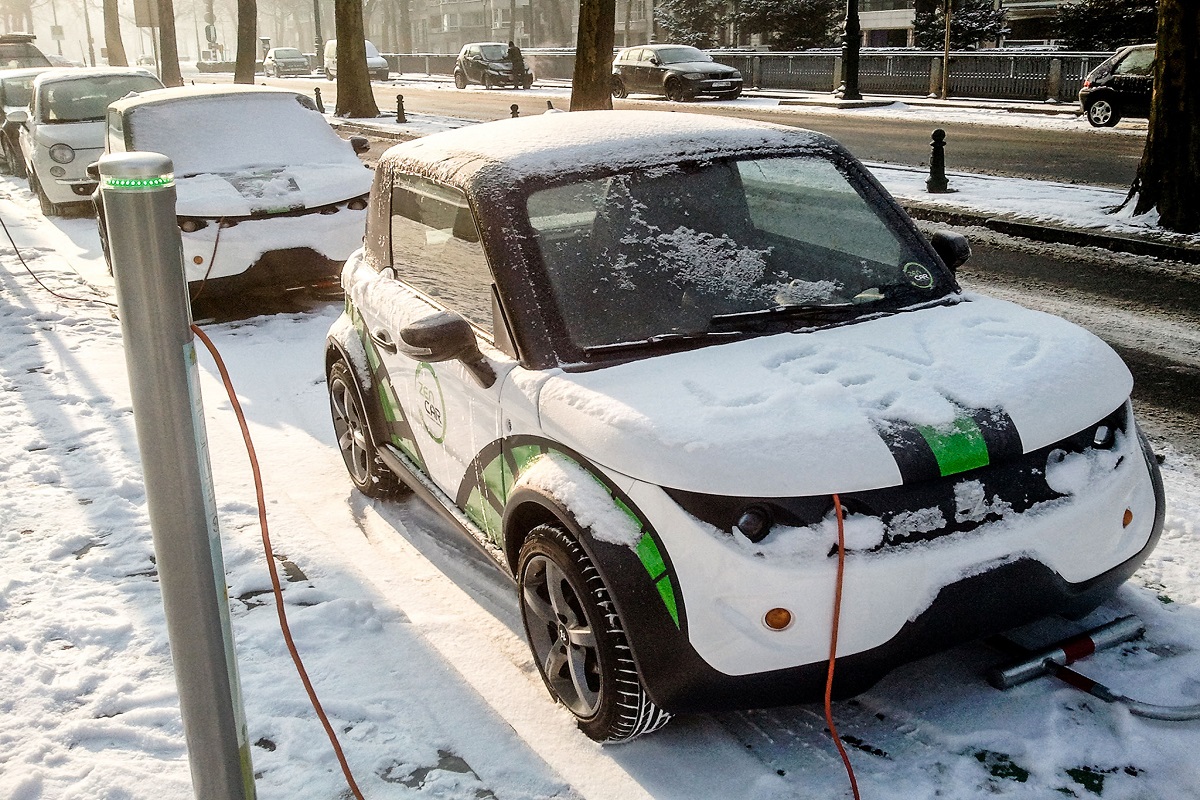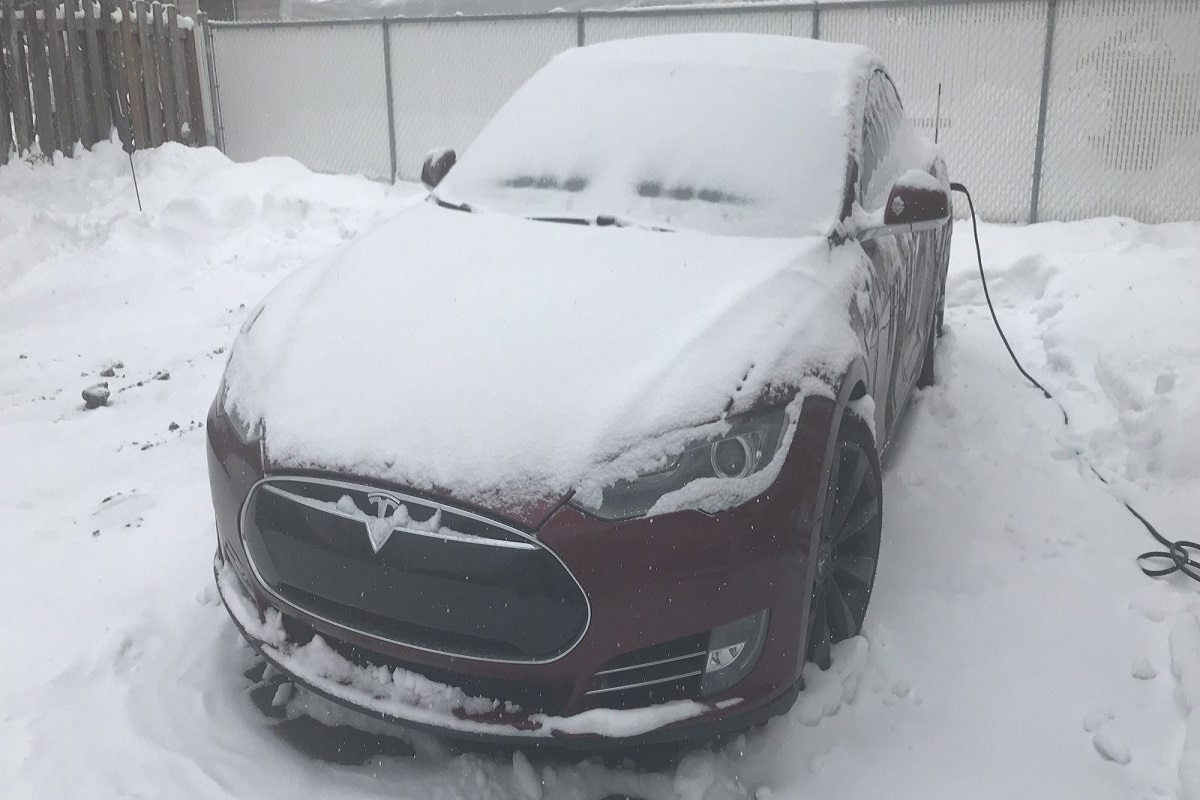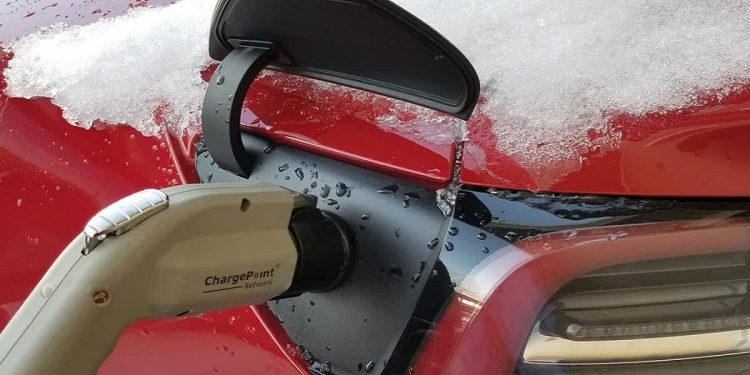EV drivers have one hurdle to jump when it comes to their vehicles in winter and that is how far they can go, and how long it will take them to recharge. In the winter months when temperatures fall below 20 degrees, electric car batteries need to perform harder, this tends to drain the battery quicker while it tries to warm up. The fact of the matter is all cars, both gas, and electric struggle in cold weather. The increased amount of energy needed is what drains the battery, not the fact that it’s cold. Any factor that significantly uses more power than normal would affect range. Range refers to the distance an electric or hybrid vehicle can travel before the battery needs to be recharged. This will mean in winter, you have fewer miles to drive with before the battery needs charging again.
The average range on a full battery is 250 miles in summer, while in winter the average range was found to be 212 miles. A study by American Automobile Association (AAA) found that if you use your electric car’s heater while driving in cold temperatures, your range can be temporarily cut by as much as 41 percent. The study of five electric vehicles by AAA also found that high temperatures can cut into battery range, but not nearly as much as the cold. The driving range returns to normal in more comfortable temperatures, say 70 to 80 degrees.

In cold temperatures, it will take longer to bring the vehicle’s battery up to a full charge. Frigid temperatures also limit an electric car’s regenerative braking function, which recovers energy that would otherwise be lost during decelerating or stopping and sends it back to the battery. Overall, electric vehicles are more efficient in colder weather because stored electricity is much easier to convert into motion than an internal combustion engine trying to convert chemical energy into mechanical, especially in winter.
Cold-Weather Tips for EV Drivers
First, don’t let the battery get too low, make sure you always have a 20 percent charge or so. If you want to power up in subzero temperatures, the car may need that reserve to warm the battery enough to start the process. Also, heat the cabin and the battery before unplugging your vehicle. That way, it uses grid power instead of battery power.
You can use your app to time your charging session so that it ends just before you leave on your trip. That way, the battery is already warm from charging and will be more efficient.
Try to slow down, especially on the highway. While electric vehicles are far more fuel-efficient than gas-powered vehicles, that increased efficiency is more pronounced in city driving than on the highway. Unlike a gas-powered car whose engine is still burning fuel when idle, an EV uses almost no electricity when stopped in city traffic. EVs are less efficient at converting chemical to electrical energy at higher speeds than at lower speeds. On highways, you’re not only using more electricity, but you’re also using it less efficiently. In short higher speeds force your battery to work harder, which sucks more range out of them.
You can also use one-pedal driving. Approach a stoplight by removing your foot from the accelerator and allowing regenerative braking to slow the vehicle down, then only use the brakes to bring the car to a full stop. You will only regenerate a little electricity, but you won’t wear your brakes down as quickly.
If you’re charging on the road, have a backup plan. You can use a phone app like PlugShare to see if and where public charging stations are available.
Shop Our Electrical Adapters Now

Make sure that you are maintaining the recommended air pressure in your vehicle’s tires. Cold air takes up less space than warm air, so tires in cold weather lose about 2% of their air pressure for every 10 degrees F drop in temperature, increasing their rolling resistance and decreasing efficiency.
Consider getting winter tires, certain EV drivers will benefit from tires that are designed to withstand winter conditions. If you live in an area with frequently low temperatures, equipping your car with winter tires will promote safety and efficiency.
Visit Our Shop to Buy Battery Heaters Now
Buy an electric vehicle with a heat pump, heat pumps use less power than conventional air conditioning systems, which makes them especially helpful over the winter. Heat pumps work by absorbing heat from the atmosphere and compressing it with a refrigerant circuit. This exchange increases the cabin heat, allowing warm air to be blown into the car. Without consuming electricity from the battery and reducing driving range, a heat pump system raises the temperature in your car, making it a more efficient option when cold weather strikes.
Limit the use of the heater while driving. Set the temperature as low as you can comfortably stand, and instead rely on your car’s heated seats and heated steering wheel (if so equipped), which consume less electricity. Wear warm clothes and a heavy coat so you can minimize engaging the climate control. In the aforementioned AAA study, the electric vehicles tested only lost an average of about 12 percent of range in the cold while running with their heaters switched off.
If you do manage to get stuck on snow or ice, disengage the car’s traction control system as it tends to be counterproductive in this type of situation. Avoid spinning the tires to avoid digging yourself into a deeper rut. Instead, gradually “rock” the vehicle back and forth to get it unstuck. With the transmission in drive, slowly creep ahead as far as possible, perhaps only an inch or two at a time, then engage the brakes, put the car into reverse, and repeat the process back and forth several times to gradually get unstuck.
Many electric cars have “Eco mode” that adjusts performance, boost mileage and reduce power consumption by limiting the energy supplied to the driving motor and cabin heaters to preserve your battery range. Select Eco mode in cold weather, this will help extend your range. Also, many EVs can let you adjust the regenerative braking feature. If your car has this feature, set your regenerative braking to the maximum to send more power back to the battery under braking.
Lastly, keep it in a heated garage, if you keep it outside, your car will lose a bit of battery charge. You will notice upon starting up and when you need to warm the battery up before driving.
You should know though, even though the cold climate presents some challenges to electrical vehicles, the cars are still efficient and can function despite the challenges. Just follow the tips shared knowing that in a short while it will be time for warmer seasons.




